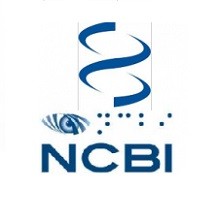
پردازش هیجان و تازگی در تجربه زیبایی شناختی مجازی معماری ها
در این مطالعه، پردازش زیباییشناختی مجازی معماریها مختلف با روش پتانسیل رخدادی بررسی میشود. دادههای پتانسیل رخدادی طی یک دستهبندی گردآوری شدند. برای گردآوری آنها، از شرکتکنندگان تحقیق خواسته شد که دستههای مختلف تصاویر اشیای موجود در زندگی روزمرهشان و تصاویر معماری را در زودترین زمان ممکن از هم تفکیک کنند. تصاویر معماری دو دسته بودند:تصاویر طراحی شده توسط معماری برجسته و تصاویر معماری عادی. آثار معماران ماهر نسبت به آثار معمولی دامنه P2 کمتر و دامنه N2 بیشتری داشتند که نشان میدهد هیجان مثبت ادراکی و ادراک تازگی در پردازش زیبایی تصاویر معماری رخ داده است. نتایج ما دو شاخص عصبی حساس، یعنی P2 و N2، را بهترتیب برای قضاوت در مورد خصوصیات لذت و تازگی در تصویر معماری ارائه میکنند.
مقدمه
امروزه معماریهای گوناگونی اطراف ما را احاطه کردهاند که توسط طراحان خلق شدهاند. معماریها بطور همزمان میتوانند تجربه و خاطرات انسان را به شکلی نامشهود شکل دهند [۱]. با این حال، چگونگی تأثیرگذاری معماری روی تجربه بشر هنوز هم بطور کامل درک نشده است [۲]. وقتی به معماریای بر میخورید، چه احساسی در شما برانگیخته میشود؟ چرا برخی از معماری ها جذابیت دارند، درحالیکه برخی دیگر اینگونه نیستند؟ از آنجاییکه معماریها نقش مهمی در زندگی روزمرهمان دارند، باید مکانیزم عصبی رابطه بین معماری و تجربه زیباییشناختی، مخصوصاً تجربیات غیرارادی، را درک کنیم.
The present study explored the implicit aesthetic processing of different architectures using an event-related potential method. Event-related potential data were acquired in a categorization task in which participants were asked to distinguish between two different categories of pictures of everyday life objects and the architectures as soon as possible. The architectural pictures included two categories: noted-architect-designed and ordinary architectures. A smaller P2 amplitude and a larger N2 amplitude were elicited by the master architects’ works than those of ordinary architectures, which indicated that perceived positive emotion and novelty perception occurred in the aesthetic processing of architectures. Our results present two sensitive neural indicators, P2 and N2, to judge the delight and novelty qualities shown by the architecture, respectively.
Introduction
Nowadays, we are surrounded by a wide variety of architectures that are created by designers. At the same time, architectures can shape human experience and memory imperceptibly [1]. However, the mechanism of how an architecture influences the human experience is still not well understood [2]. When we walk by architectures, what feeling will be aroused? Why are some architectures attractive, but not others? As architectures play an important role in our daily life, it is important to understand the neural mechanism of the relationship between the architecture and the aesthetic experience, especially in a spontaneous manner.
مقدمه
روشها
شرکتکنندگان تحقیق
محتوای آزمایش
روند آزمایش
گردآوری دادههای ERP
آنالیز دادههای ERP
نتايج
نتایج رفتاری
نتایج پتانسیل رخدادی
تشریح مطالب
نتيجه گيری
Introduction
Methods
Participants
Experimental materials
Experimental procedure
ERP data acquisition
ERP data analysis
Results
Behavioural results
Event-related potential results
Discussion
Conclusion
- اصل مقاله انگلیسی با فرمت ورد (word) با قابلیت ویرایش
- ترجمه فارسی مقاله با فرمت ورد (word) با قابلیت ویرایش، بدون آرم سایت ای ترجمه
- ترجمه فارسی مقاله با فرمت pdf، بدون آرم سایت ای ترجمه
